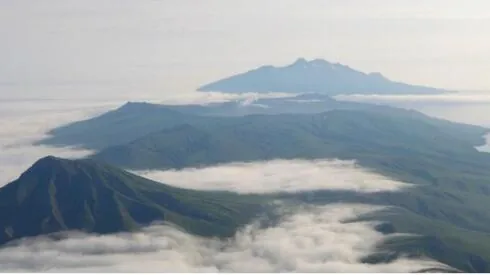
Scientists Unravel 200-Year-Old Mystery Behind Catastrophic Volcanic Eruption
2025-01-05
Author: Mei
Scientists Unravel 200-Year-Old Mystery Behind Catastrophic Volcanic Eruption
In an astounding revelation, researchers have pinpointed the origin of a catastrophic volcanic eruption from 1831, unmasking a mystery that has intrigued scientists for nearly two centuries. The eruption, which occurred on the desolate Simushir Island in the Kuril Islands, not only shook the local geology but also triggered profound climatic changes across the globe.
The 1831 eruption released massive amounts of sulfurous gases into the atmosphere, forming a reflective barrier that dimmed sunlight and caused a significant global cooling of approximately one degree Celsius. This dramatic temperature drop led to disastrous crop failures and widespread famine, particularly impacting Asia’s agriculture and food security during that era.
For years, this eruption was referred to as Earth’s last 'mystery eruption,' its volcano’s identity cloaked in uncertainty, despite its notable effects on climate and society. However, new groundbreaking research led by Dr. William Hutchison from the University of St Andrews has finally solved this enigma. Their findings, published in the Proceedings of the American National Academy of Sciences, utilized newly developed techniques to extract and analyze microscopic ash particles preserved in polar ice cores.
Dr. Hutchison elaborated, 'Recent advancements in our ability to collect and analyze these minuscule ash samples—each about one-tenth the width of a human hair—have allowed us to create a precise chemical profile that matches the deposits from the 1831 eruption.'
This detailed analysis led researchers to confidently identify Zavaritskii volcano, situated on the remote Simushir Island—part of the ongoing territorial dispute between Russia and Japan—as the source of the eruption. Once a secret Soviet military base during the Cold War, where nuclear submarines were harbored in a flooded volcanic crater, the island remains a strategically significant yet sparsely studied region.
'The chemistry of the ice samples was examined at an unprecedented resolution, enabling us to accurately date the eruption to the spring and summer of 1831,' Dr. Hutchison noted, emphasizing the collaborative efforts between international teams in Japan and Russia who provided critical samples from this isolated volcano.
The identification of Zavaritskii volcano as the culprit behind this powerful eruption highlights the need for further research into the volcanic activity of the Kuril Islands, which have been historically overlooked but are known to be a hotbed of geological activity. Although Zavaritskii has been dormant since its last eruption in 1957, it remains an active volcano, underscoring the potential threat it poses for future eruptions.
Understanding the origins of past eruptions is crucial for scientists as they work to predict potential future volcanic events. Dr. Hutchison stressed the importance of a coordinated international response to future eruptions, drawing parallels to the catastrophic consequences of the 1831 incident. 'We must proactively prepare for the next significant eruption, just as history has shown us can occur,' he concluded.
This staggering revelation not only sheds light on the past but also serves as a warning for future volcanic activity that could have profound effects on global climate and food security. Are we prepared for the next climate-altering eruption? The clock is ticking, and scientists are keeping a close watch on the restless planet beneath us.

 Brasil (PT)
Brasil (PT)
 Canada (EN)
Canada (EN)
 Chile (ES)
Chile (ES)
 Česko (CS)
Česko (CS)
 대한민국 (KO)
대한민국 (KO)
 España (ES)
España (ES)
 France (FR)
France (FR)
 Hong Kong (EN)
Hong Kong (EN)
 Italia (IT)
Italia (IT)
 日本 (JA)
日本 (JA)
 Magyarország (HU)
Magyarország (HU)
 Norge (NO)
Norge (NO)
 Polska (PL)
Polska (PL)
 Schweiz (DE)
Schweiz (DE)
 Singapore (EN)
Singapore (EN)
 Sverige (SV)
Sverige (SV)
 Suomi (FI)
Suomi (FI)
 Türkiye (TR)
Türkiye (TR)
 الإمارات العربية المتحدة (AR)
الإمارات العربية المتحدة (AR)